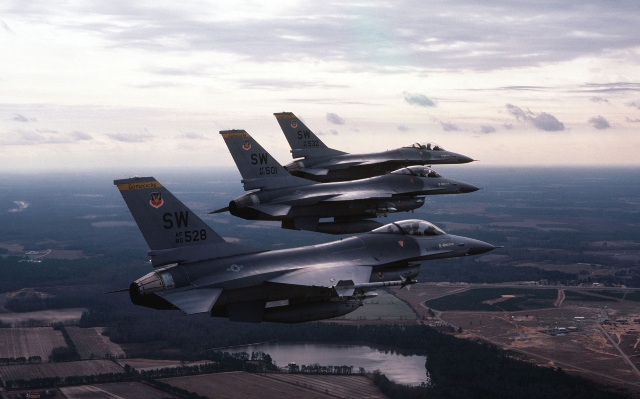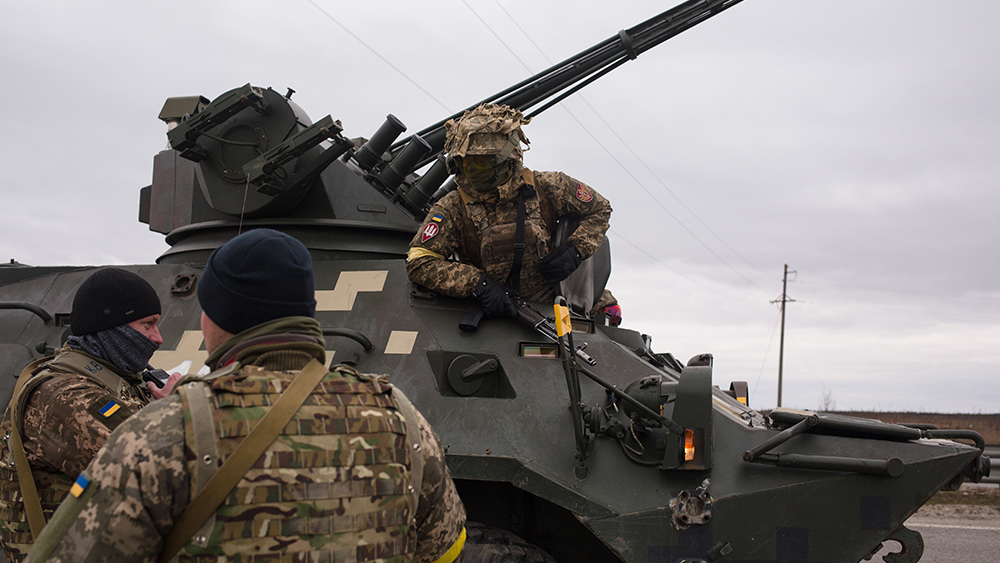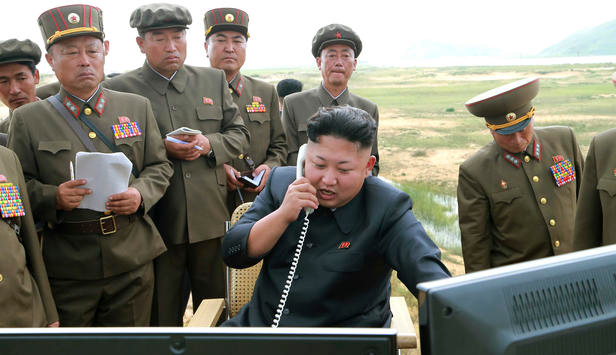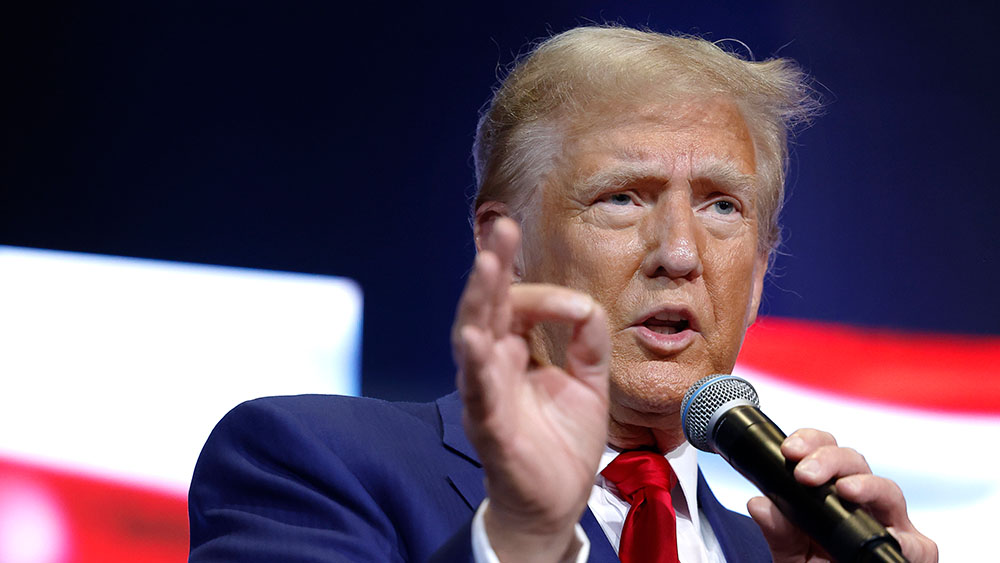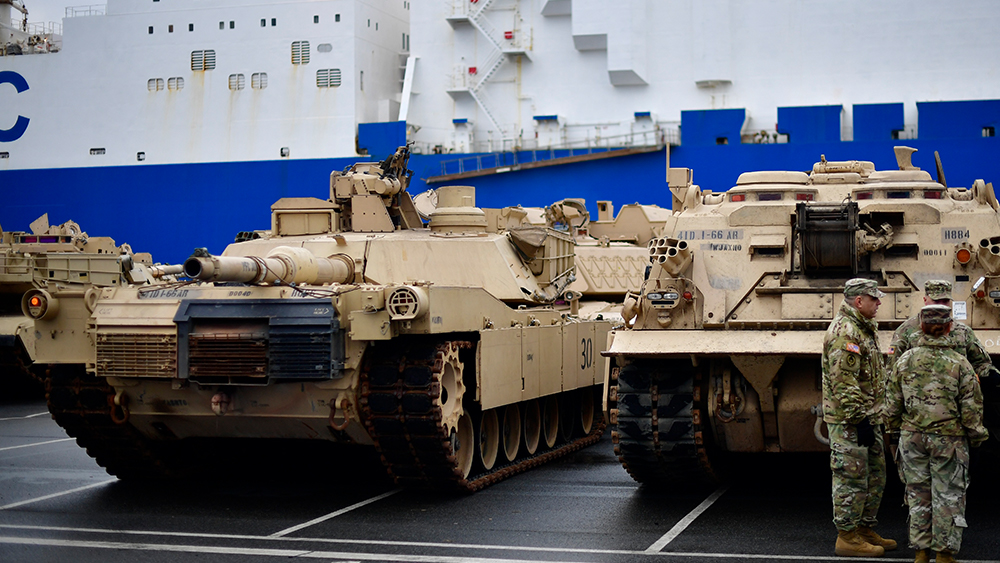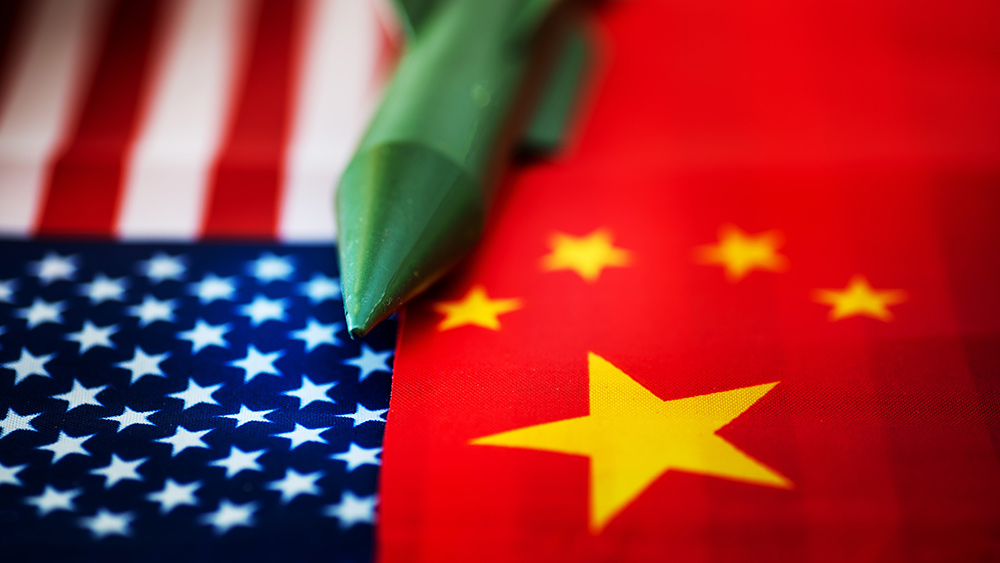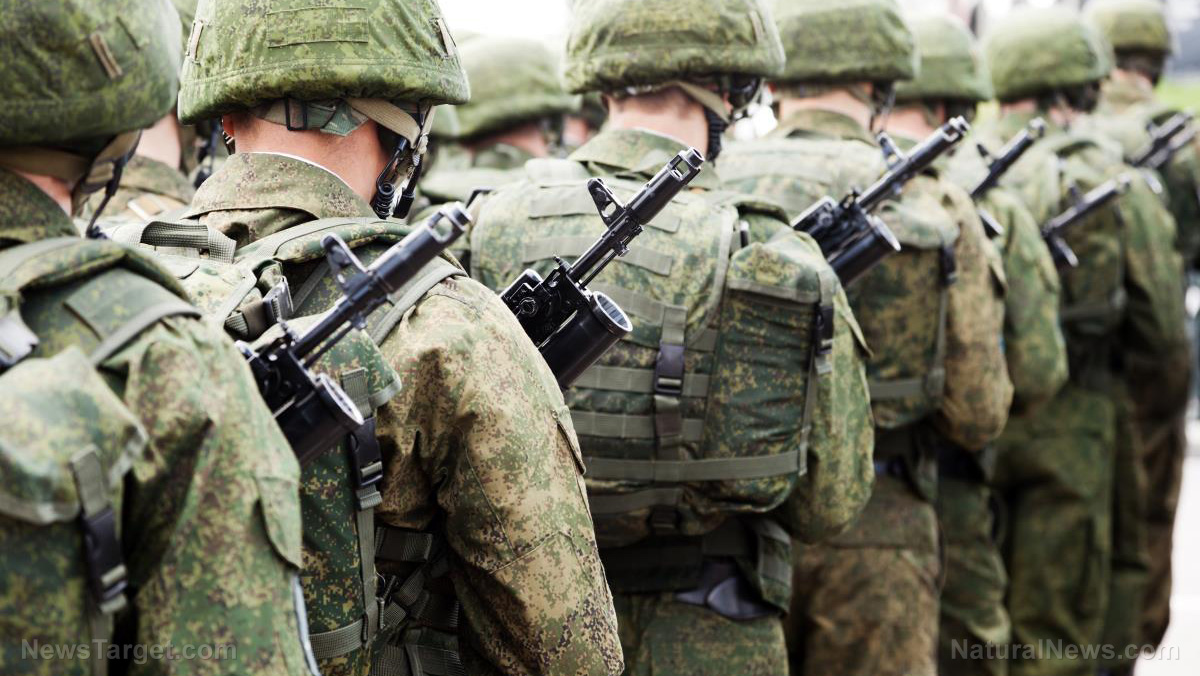North Korea’s new nuclear submarine signals escalating threat, Russian backing suspected
04/16/2025 / By Cassie B.
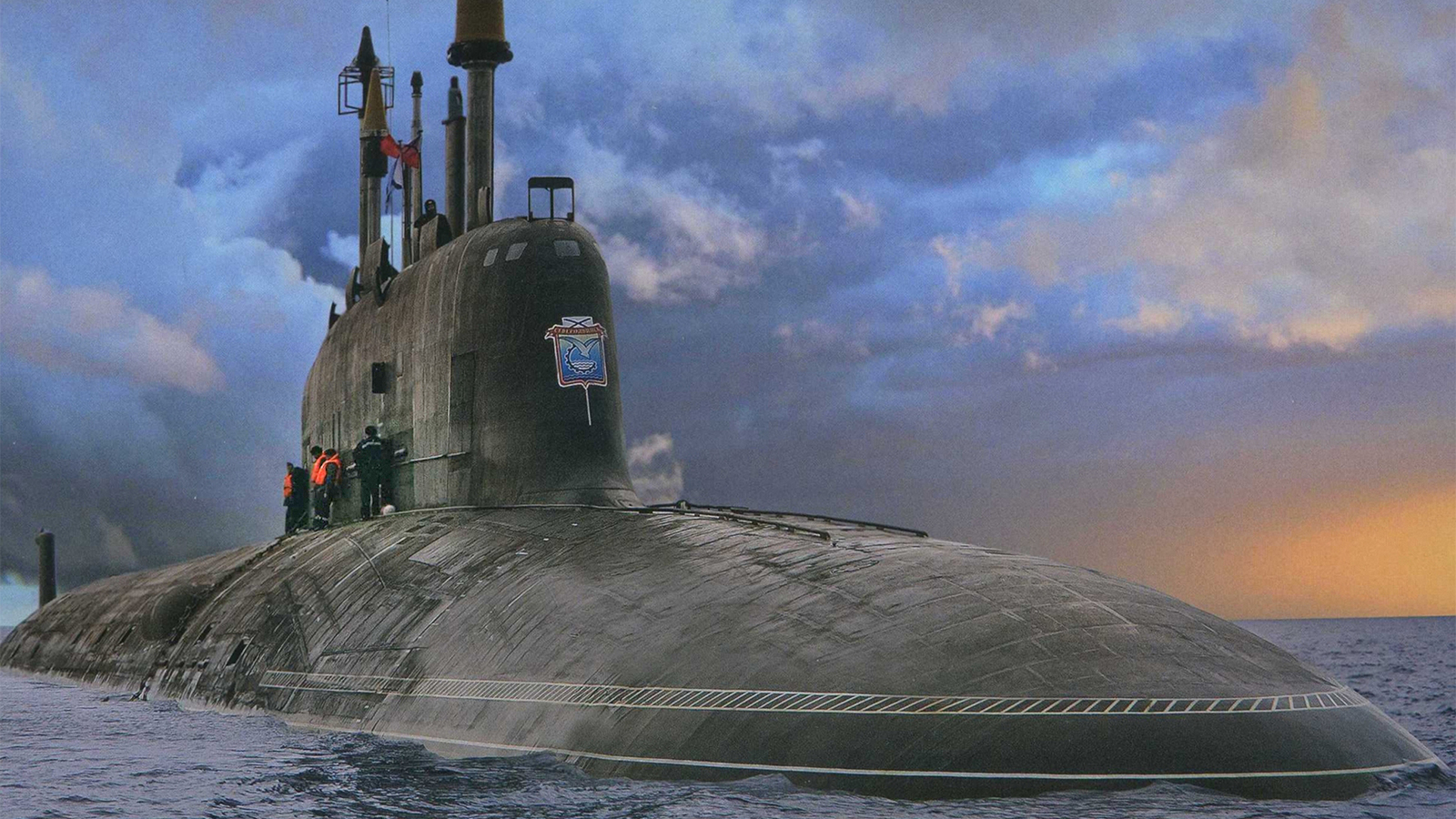
- North Korea unveiled its first nuclear-powered submarine, escalating military tensions.
- The submarine can carry up to 10 nuclear-capable missiles, threatening U.S. and regional security.
- Experts suspect Russian assistance in developing the submarine, signaling a dangerous alliance.
- South Korea faces growing pressure to pursue its own nuclear program in response.
- The development undermines past diplomatic efforts and could trigger a regional arms race.
North Korea has unveiled its first nuclear-powered submarine, marking a dangerous escalation in its military capabilities and raising urgent questions about the regime’s growing ties with Russia.
Photos released by state media show leader Kim Jong Un inspecting the massive vessel, which analysts believe could carry up to 10 nuclear-capable ballistic missiles. The development underscores the failure of past diplomatic efforts to curb Pyongyang’s nuclear ambitions while validating fears of a deepening alliance among rogue regimes, including Russia and China. With its ability to threaten U.S. cities and naval bases, the submarine complicates an already precarious security landscape in East Asia, potentially triggering a regional arms race.
A major leap in Pyongyang’s arsenal
The submarine, estimated to weigh between 6,000 and 7,000 tons, represents a significant technological leap for North Korea, which has historically relied on aging diesel-powered submarines. Unlike their limited predecessors, nuclear-powered subs can operate longer and farther, making them a formidable tool for coercion. Moon Keun-sik, a South Korean submarine expert, warned that the vessel could be “absolutely threatening to us and the U.S.” given its potential to carry long-range missiles like the Pukguksong-6, which may be capable of striking American shores.
Kim Jong Un has long pursued nuclear-powered submarine technology, first vowing to acquire it in 2021 alongside other advanced weapons like hypersonic missiles. While past attempts, including a 2023 claim of a “tactical nuclear attack submarine,” were dismissed as propaganda, this latest development appears far more credible. Analysts note that the submarine’s size suggests it may use a double-hull design, which is likely necessary to accommodate large ballistic missiles. However, questions remain about its stealth and operational readiness.
Russian assistance fuels concerns
Perhaps most alarming is the evidence suggesting Russian technological aid. Moon Keun-sik raised the possibility that Moscow provided North Korea with nuclear reactor expertise in exchange for Pyongyang’s shipments of artillery and munitions for Russia’s war in Ukraine. If confirmed, this would expose a dangerous quid-pro-quo between two U.S. adversaries, reinforcing concerns about an emerging “axis of autocracies” that includes Russia, China, North Korea, and Iran.
North Korea’s sudden ability to construct a reactor despite decades of sanctions strangling its economy points to external support. While Pyongyang may have been researching the technology independently, its rapid progress aligns with reports of deepening Russia-North Korea military collaboration. The implications are dire: not only could this submarine patrol undetected for longer periods, but it could also encourage further proliferation as other rogue regimes seek similar capabilities.
Regional fallout and South Korea’s dilemma
The submarine’s unveiling has reignited debate in South Korea over whether to pursue its own nuclear weapons program—a stance gaining traction among conservative lawmakers. Currently, Seoul relies on U.S. extended deterrence, but the North’s advancements may erode confidence in traditional security guarantees. Some experts argue that South Korea’s superior conventional submarine fleet, including the KSS-III class, could counterbalance Pyongyang’s slower, less stealthy nuclear sub. However, the symbolic shift toward nuclear propulsion could destabilize the region, pushing Japan and Taiwan toward more aggressive defense postures.
North Korea has already tested submarine-launched ballistic missiles (SLBMs) multiple times, including a 2021 demonstration of its KN-23 missile. Yet its existing fleet, primarily Soviet-era Romeo-class submarines, lacks the range and firepower of this new vessel. The regime’s escalating rhetoric—including Kim’s recent call to counter “the inveterate gunboat diplomacy of the hostile forces”—hints at a strategy of brinkmanship, possibly timed ahead of U.S.-South Korea military drills.
North Korea’s nuclear submarine underscores the futility of past engagement policies, from the failed Trump-Kim summits to years of fruitless multilateral talks. Despite sanctions, Pyongyang has expanded its arsenal, now with apparent Russian backing. This development isn’t merely about one submarine; it’s a harbinger of a darker era where rogue states collaborate to undermine global security.
The U.S. and its allies must reassess their approach. Strengthening missile defenses, tightening sanctions enforcement, and confronting Russia’s role in proliferation are critical steps. But as Pyongyang inches closer to a deployable nuclear submarine, the window to prevent a destabilizing arms race narrows. South Korea, Japan, and the U.S. can no longer afford complacency; deterrence must evolve to match this mounting threat.
Sources for this article include:
Submit a correction >>
Tagged Under:
big government, dangerous, military tech, national security, North Korea, nuclear submarine, Russia, submarines, weapons tech
This article may contain statements that reflect the opinion of the author
RECENT NEWS & ARTICLES
COPYRIGHT © 2018 MILITARYTECH.NEWS
All content posted on this site is protected under Free Speech. MilitaryTech.news is not responsible for content written by contributing authors. The information on this site is provided for educational and entertainment purposes only. It is not intended as a substitute for professional advice of any kind. MilitaryTech.news assumes no responsibility for the use or misuse of this material. All trademarks, registered trademarks and service marks mentioned on this site are the property of their respective owners.




